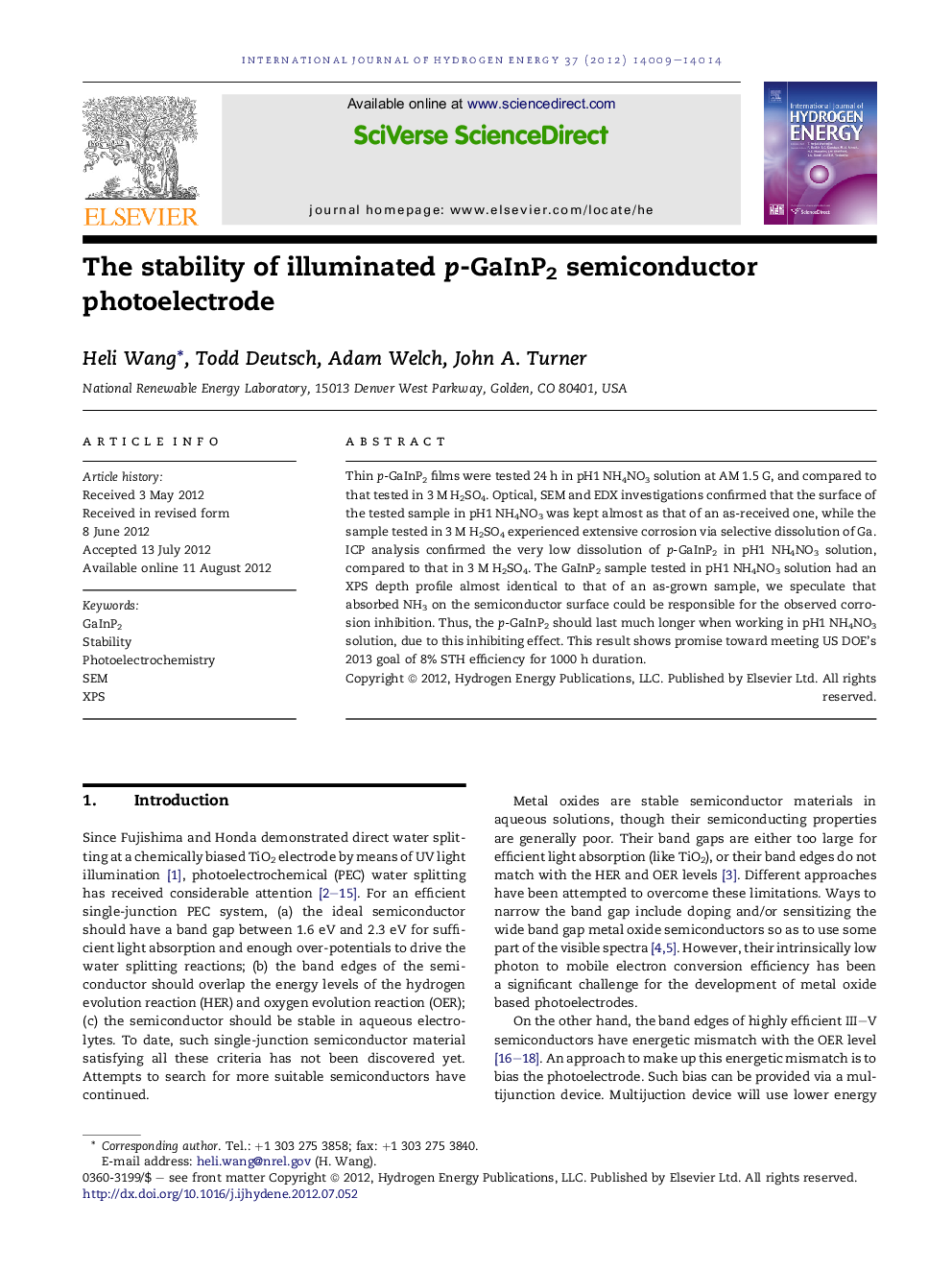| کد مقاله | کد نشریه | سال انتشار | مقاله انگلیسی | نسخه تمام متن |
|---|---|---|---|---|
| 1274743 | 1497550 | 2012 | 6 صفحه PDF | دانلود رایگان |

Thin p-GaInP2 films were tested 24 h in pH1 NH4NO3 solution at AM 1.5 G, and compared to that tested in 3 M H2SO4. Optical, SEM and EDX investigations confirmed that the surface of the tested sample in pH1 NH4NO3 was kept almost as that of an as-received one, while the sample tested in 3 M H2SO4 experienced extensive corrosion via selective dissolution of Ga. ICP analysis confirmed the very low dissolution of p-GaInP2 in pH1 NH4NO3 solution, compared to that in 3 M H2SO4. The GaInP2 sample tested in pH1 NH4NO3 solution had an XPS depth profile almost identical to that of an as-grown sample, we speculate that absorbed NH3 on the semiconductor surface could be responsible for the observed corrosion inhibition. Thus, the p-GaInP2 should last much longer when working in pH1 NH4NO3 solution, due to this inhibiting effect. This result shows promise toward meeting US DOE's 2013 goal of 8% STH efficiency for 1000 h duration.
► We tested p-GaInP2 at AM 1.5 G in different solutions.
► 3 M H2SO4 is very corrosive.
► GaInP2 had significantly less corrosion in pH1 NH4NO3.
► Absorbed NH3 could be the reason for the inhibition.
Journal: International Journal of Hydrogen Energy - Volume 37, Issue 19, October 2012, Pages 14009–14014